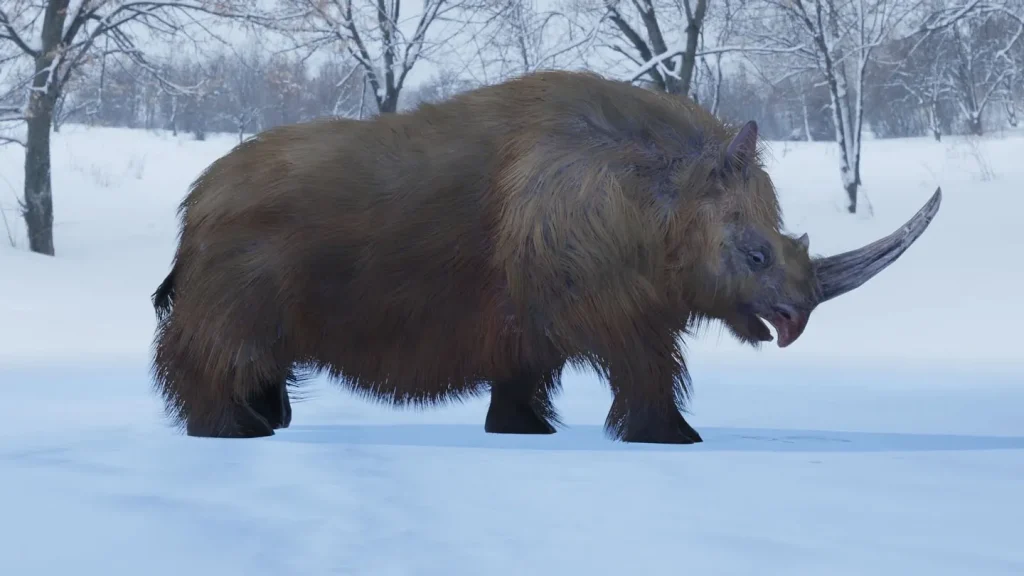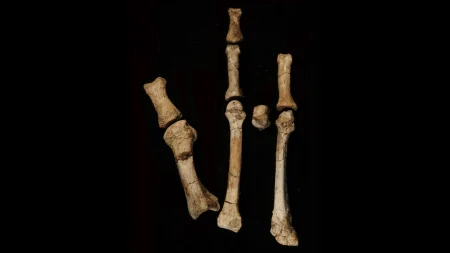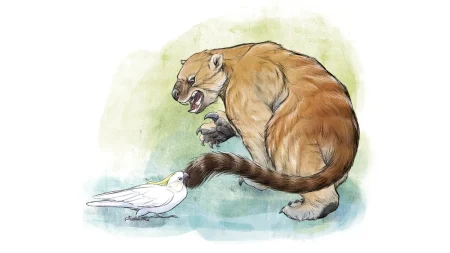Record-Breaking Woolly Rhino Horn Unveils Ice Age Secrets
In a remarkable discovery that bridges the gap between our world and the Ice Age, researchers have unearthed the longest woolly rhinoceros horn ever found, offering unprecedented insights into these magnificent extinct creatures. Stretching more than 1.6 meters—nearly the height of a small adult human—this extraordinary specimen exceeds the previous record holder by a full 30 centimeters. The horn, complete with its skull, was discovered by a local hunter and fisherman along a tributary of Russia’s Kolyma River in Siberia, where the permafrost had preserved it for millennia. Carbon dating of nearby frozen lemmings revealed that this woolly rhino lived approximately 19,600 years ago, providing us with a precise window into a long-vanished ecosystem.
What makes this discovery particularly fascinating is not just the horn’s impressive size, but what it tells us about the animal that carried it. Despite bearing the longest horn ever found, the skull was relatively small for an adult woolly rhino, leading researchers to believe it belonged to a female. This challenges our understanding of sexual dimorphism in these animals, as the research team, led by vertebrate zoologist Ruslan Belyaev from the A.N. Severtsov Institute of Ecology and Evolution in Moscow, notes that while male woolly rhinos typically had thicker horns, females may have possessed the longest ones—similar to the pattern observed in modern African rhino species. Whether these longer female horns resulted from faster growth or slower wear remains an open question that continues to intrigue scientists.
The ancient woolly rhinoceros (Coelodonta antiquitatis) shared its last common ancestor with today’s Sumatran rhino around 9 million years ago, yet developed adaptations specifically suited for the harsh Ice Age climate. The team’s analysis revealed something equally remarkable about the individual’s age: by counting the alternating light and dark bands of keratin in the horn—which form like tree rings due to seasonal changes—they determined this rhino lived at least 40 years, making her the oldest known woolly rhino ever discovered. This longevity, comparable to the oldest captive modern rhinos and exceeding the typical lifespan of wild ones, suggests these animals were remarkably resilient. “For the first time, we were able to show that in the harsh conditions of the Ice Age, woolly rhinos could live as long as modern species,” explains Belyaev, highlighting the impressive adaptability of these ancient creatures.
The horn’s unusual shape provides crucial clues about how woolly rhinos survived in their frozen environment. Unlike the more conical horns of modern rhinoceroses, woolly rhino horns were distinctively flattened and saberlike—an adaptation that researchers believe helped them sweep away snow to access vegetation during the harsh winters. Gennady Boeskorov, a paleontologist from the Diamond and Precious Metals Geology Institute in Yakutsk who examined the specimen, noted significant wear on the front of the horn extending nearly halfway through the breadth of its base, supporting the theory that these animals regularly used their horns as snow-clearing tools. This specialized adaptation represents a fascinating example of evolutionary response to environmental challenges.
When compared to modern rhino species, the woolly rhino’s horn stands in a class of its own. Researchers have created comparative illustrations showing the horns of various rhino species, arranging them from longest to shortest: woolly rhinoceros, white rhinoceros, black rhinoceros, Sumatran rhinoceros, and greater one-horned rhinoceros. The distinctively elongated and flattened shape of the woolly rhino’s horn emphasizes just how specialized these Ice Age giants had become for their unique ecological niche. This visual comparison helps us understand not just the differences in horn morphology across species, but also how each shape evolved to serve specific functions in different environments.
The scientific community sees even more potential in this remarkable find. Luca Pandolfi, a paleontologist at the University of Italy not involved in the research, suggests that these horns might serve as natural climate archives. Just as tree rings can reveal historical climate conditions, the growth bands in woolly rhino horns might contain detectable signals of ancient climate patterns, potentially offering valuable data about temperature fluctuations and seasonal changes during the Ice Age. Such information could contribute significantly to our understanding of past climate dynamics and provide context for current climate research. This specimen, therefore, represents not just a biological curiosity, but a potential treasure trove of environmental information from a world long vanished beneath the ice.















